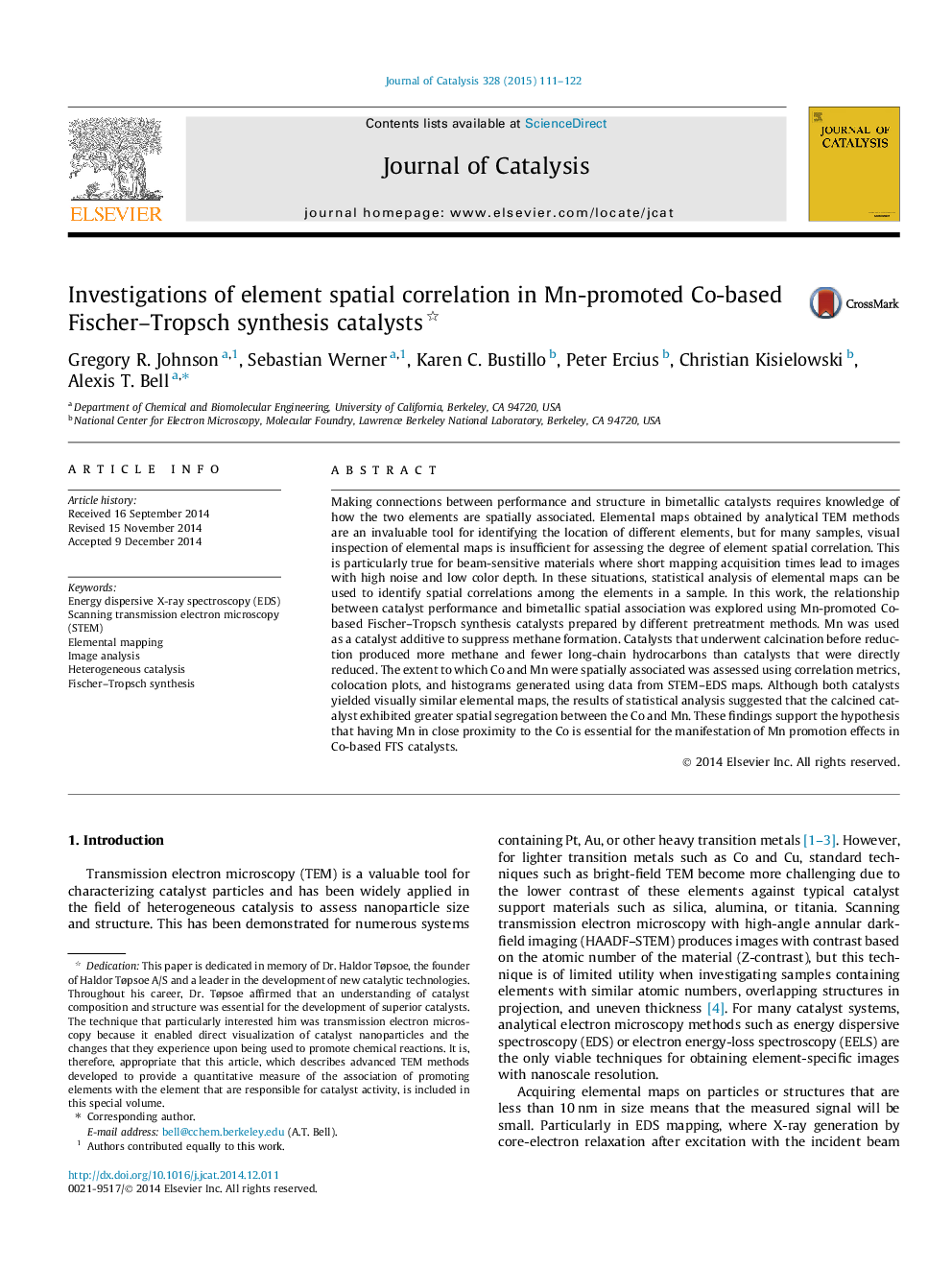| کد مقاله | کد نشریه | سال انتشار | مقاله انگلیسی | نسخه تمام متن |
|---|---|---|---|---|
| 60769 | 47547 | 2015 | 12 صفحه PDF | دانلود رایگان |

• Statistical analysis of STEM–EDS maps quantifies of element segregation in catalysts.
• CoMn catalyst calcination/reduction increases spatial segregation between Co and Mn.
• Higher segregation between Co and Mn reduces selectivity toward C5+ hydrocarbons.
Making connections between performance and structure in bimetallic catalysts requires knowledge of how the two elements are spatially associated. Elemental maps obtained by analytical TEM methods are an invaluable tool for identifying the location of different elements, but for many samples, visual inspection of elemental maps is insufficient for assessing the degree of element spatial correlation. This is particularly true for beam-sensitive materials where short mapping acquisition times lead to images with high noise and low color depth. In these situations, statistical analysis of elemental maps can be used to identify spatial correlations among the elements in a sample. In this work, the relationship between catalyst performance and bimetallic spatial association was explored using Mn-promoted Co-based Fischer–Tropsch synthesis catalysts prepared by different pretreatment methods. Mn was used as a catalyst additive to suppress methane formation. Catalysts that underwent calcination before reduction produced more methane and fewer long-chain hydrocarbons than catalysts that were directly reduced. The extent to which Co and Mn were spatially associated was assessed using correlation metrics, colocation plots, and histograms generated using data from STEM–EDS maps. Although both catalysts yielded visually similar elemental maps, the results of statistical analysis suggested that the calcined catalyst exhibited greater spatial segregation between the Co and Mn. These findings support the hypothesis that having Mn in close proximity to the Co is essential for the manifestation of Mn promotion effects in Co-based FTS catalysts.
Figure optionsDownload high-quality image (102 K)Download as PowerPoint slide
Journal: Journal of Catalysis - Volume 328, August 2015, Pages 111–122